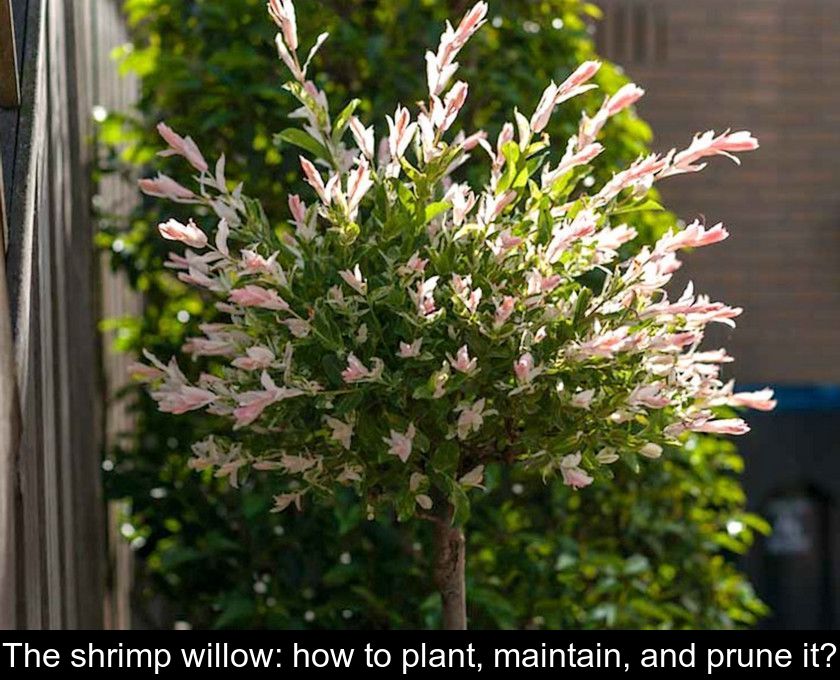The Shrimp Willow: How To Plant, Maintain, And Prune It?
With its very original pinkish foliage, the shrimp willow is the undisputed star of urban gardens. Here is everything you need to know before adopting this deciduous shrub native to Japan. We will explain how to plant it, care for it, and prune it to highlight the beauty of its foliage.
1- When to plant a shrimp willow?
The best season to plant a shrimp willow in your garden is spring or autumn, outside of frost and extreme heat periods.
Thus, to plant your shrub, you can choose between the period from February to May or from October to December.
In garden centers, the selection is more extensive in spring when the Salix integra ‘Hakuro Nishiki’ shrubs begin to display their remarkable white and pink foliage.
Note: if you want your willow to remain decorative in winter, choose the Salix integra Flamingo variety, which features red stems once the foliage has fallen.
2- Where to plant a Japanese willow?
Like all shrubs in the willow family, the shrimp willow likes to have cool feet. Therefore, it is important to avoid placing it in a location that is too hot. At the time of planting, remember to mulch its base to retain soil moisture.
If the layout of your land allows, you can plant it near a water source. If you wish to install it as an isolated specimen, such as on a lawn, you will need to choose its location carefully so that it benefits from partial shade or gentle sunlight.
Caution: an overly hot and sunny exposure can burn the young pink leaves that give this shrub its charm!
3- How to care for a Japanese willow?
When it thrives in its location, the dappled willow is a rather easy shrub to maintain. Its only two requirements are fresh soil and annual pruning.
During the first two years after planting, you will need to water it generously 2 to 3 times a week, especially during hot periods.
Regular watering allows this shrub to develop its root system. To boost its growth, you can also add some compost each year in the fall.
4- How to prune a Japanese willow?
Pruning the shrimp willow is an essential maintenance gesture to keep the shrub's foliage colors beautiful.
Indeed, this operation helps to stimulate the appearance of new shoots. It is the young leaves that display the white-pink color, giving the impression that the shrub is in bloom...
This shrub should be pruned annually at the end of winter, between late February and March, depending on your region. You must prune before the buds appear.
The pruning of Salix integra Hakuro Nishiki should not be too severe. Simply shorten the stems by about a third of their length using sharp and disinfected shears or pruners.
Take advantage of this intervention to:
• remove dead branches.
• contain the height and spread of the shrub in small spaces.
• give this decorative shrub a regular shape, such as a ball shape that highlights its foliage.
5- Why does a shrimp willow have yellowing leaves?
Yellowing leaves on a dappled willow can be a sign of water deficiency. If you notice that the leaves are limp, yellowing, and falling off, increase watering.
If your willow is still in a pot, before planting, you can even soak it in a basin to rehydrate the root ball.
To save your shrub from water stress:
• place it in a sheltered, shaded area, especially during periods of intense heat.
• continue watering regularly.
• do not let water stagnate at its base, for example in a saucer for a potted specimen. Willows like cool soil but not waterlogged!
Be careful not to wet the foliage during watering! Excess moisture on the leaves can promote the appearance of fungal diseases such as powdery mildew (recognizable by the white coating on the leaves) and anthracnose (which causes brown or black spots on the leaves).







